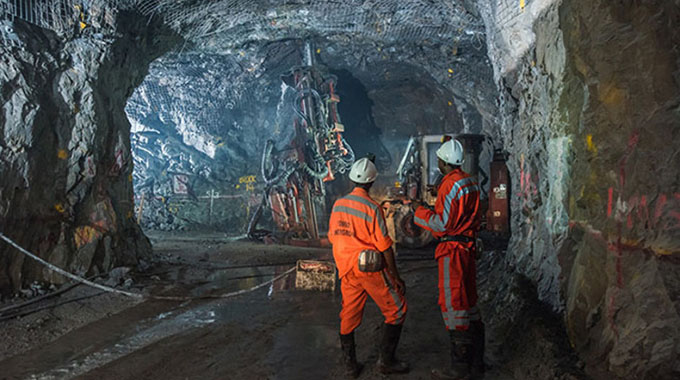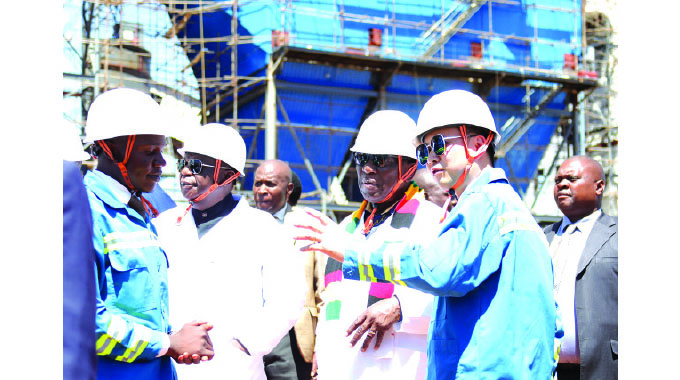Road rehabilitation adds shine to development portfolio

Ruth Butaumocho
African Agenda
Back in the early 1980s, the phrase “Masvingo necarpet”, was a euphemism commonly used in reference to the tarred and well maintained Harare-Masvingo highway, where motorists would cruise with ease, courtesy of a smooth and flawless tarred road.
The road gave credence to the pride that made the people of Masvingo walk tall, shoulders high up, while the rest of who not hailing from that province greened with envy. What with the Masvingo people’s sleek tongue and high pitched tempo?
Being the nerve centre of Zimbabwe’s commercial road transport, the highway was a marvel for many road users.
It was because of its clean bill from motorists that yesteryear crooner Jonah Moyo ended up penning a celebratory song titled “Masvingo Necarpet” in which he proudly declared that the highway made it easier to see his loved ones without any hassles.
Years later, the Harare-Masvingo highway, was to lose its lustre and grandeur owing to over use and lack of maintenance.
The once revered highway, became a perfect theatre of frustration, accidents and deaths in years that were to follow.
Hardly a month would pass before the country recorded a fatal accident in the highway that was now characterised by deep potholes, receding verges and shoulders.
However, the highway is now on the mend, following the New Dispensation’s decision to prioritise road infrastructure in its economic development trajectory.
Rehabilitation of roads is not only being done in the major highways, but in all road networks across the country.
Under the Harare-Beitbridge project, the Government is transforming the nearly 600km trunk road into a world-class highway that will be key in helping the continent achieve its progressive integration efforts under the African Continental Free Trade Area.
The highway rehabilitation is one of the major programmes the new political has undertaken to as part of its many and varied economic projects critical towards the attainment of Vision 2030 of an upper middle income economy, since infrastructure development is key in economic growth.
Giving an update on the state of Zimbabwe’s key projects during the presentation of the mid-term fiscal policy review last Thursday, Finance Minister Mthuli Ncube said about half of the $10,7 billion had been deployed to the Harare-Masvingo-Beitbridge Highway, the biggest of ongoing road rehabilitation projects.
Resources have also been allocated to other road rehabilitation programmes, as the Government moves with speed in infrastructure development to complement ongoing economic projects, which have already set tone for a positive economic growth.
The beauty about the ongoing road infrastructure is that once it is fully rehabilitated, Zimbabwe should begin to see an economic boon as a result of the North-South transport corridor, which most transporters from neighbouring countries prefer to use for its convenience.
By its location, Zimbabwe is strategically located in the region and most transporters prefer to use the Beitbridge route which remains shorter compared to other routes.
Low crime rate is also another factor that have often given Zimbabwe a competitive edge against other neighbouring countries. Because of the short distance, Zimbabwe has become a preferred transit route of choice for transporters from the region.
With the improved road network, there is no reason why Zimbabwe should not get the bulk of business in the region, which had been reduced, because of the continued deterioration of the road network, hence the Government’s decision to pour money in its rehabilitation as a matter of urgency.
Outside the country’s efforts to ensure accessibility of all the towns to improve movement among locals, the ongoing road infrastructure project also falls into the basket of a regional business opportunity that was created following the operationalisation of the African Continental Free Trade Area (AfCFTA).
Already operational, the grand platform now allows Africans to trade among themselves, explore existing opportunities, review challenges and be able to fine-tune theirown trading platform without outside interference.
And true to the aspirations of the agreement, other countries are already seeing the benefits of this grand platform, where some countries such as Ghana have begun to trade, generating substantial economic benefits for countries that are endowed with various natural resources.
In light of the existing synergies, the need for greater road infrastructure could not have come at a better time.
The need for such an investment is timely and clear; It is serving both the local and regional interests equally, which now need to sustainably manage such investments, because of their common interests and the term goal of having a good road network.
For a country that for long had to endure the bane of bad road networks, losing business in the process, the ongoing road rehabilitation programme, is one of the country’s milestone achievements that should be attributed to an epitome of the Government’s pragmatic and visionary solutions the country needs to move forward.
However, the Zimbabwean Government’s success in road infrastructure provision will be measured not by the quantum of funds invested, but on how road infrastructure will contribute to the achievement of the country’s economic, social and environmental objectives.
More importantly, for the road infrastructure investment to be effective, it should be complemented with robust and progressive measures that supports the vision.
Once the infrastructure is fully functional, there should also be funds set aside for regular rehabilitation. The reason why the country’s roads overran their life shelf was because no plan and resources allocated to maintainance.
Good road infrastructure would also need to be supported by competitive toll fees, efficient toll gates, and investing in rest-stops for the long distance and other travellers.
Current existing challenges at some toll gates such as long winding queues of motorists waiting to be served, slow processing of swipe machines and too often the rude attendants would also need to be addressed.
Whilst the Government can do so much, the private sector should also play a pivotal part in capital projects through availing funds, under different packages.
Governments worldwide have increasingly turned to the private sector for additional resources, increased efficiency and sustainable development in many fields, including that of transport infrastructure and services.
Following trends in other fields, private sector involvement in the transport sector is now common in many regions, including the in the Asia-Pacific and even the SADC region where several countries have partnered the private sector in road infrastructure development.
The partnerships can either be under the Build, Operate, Transfer concept or selling of shares and even grants, which are redeemable later.







Comments